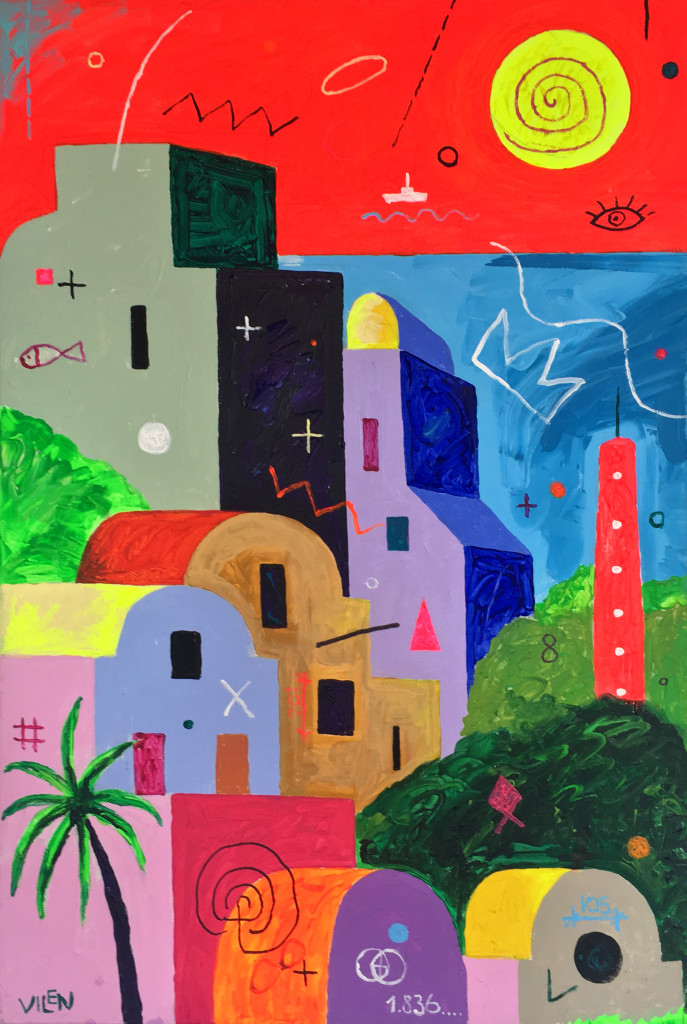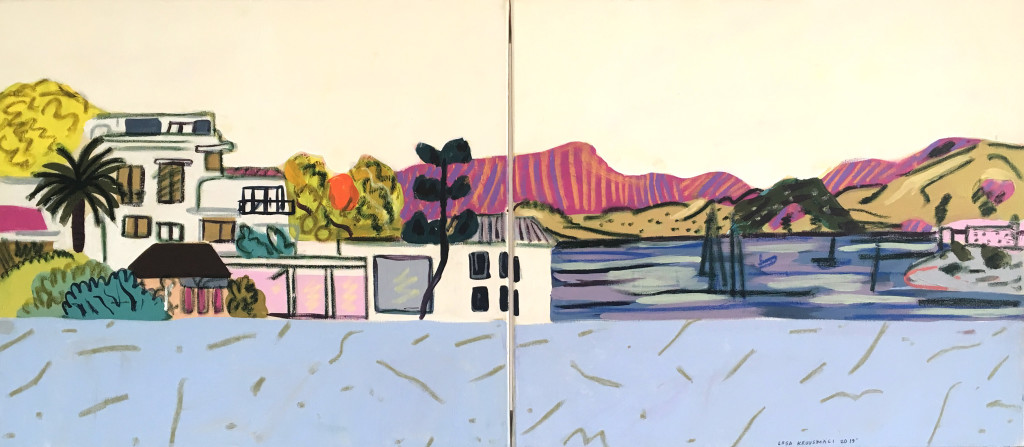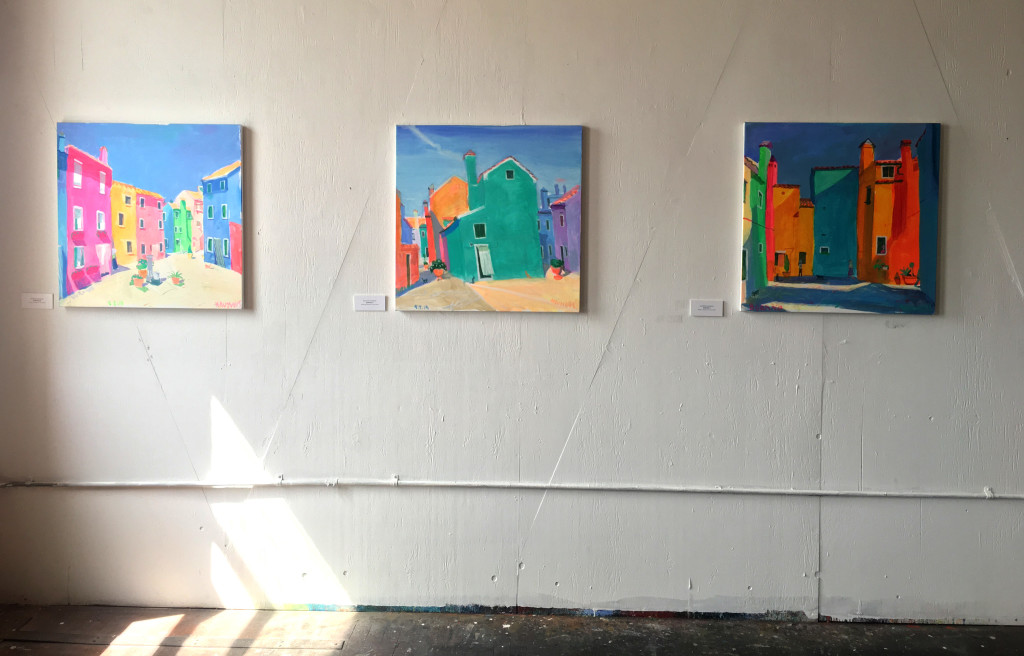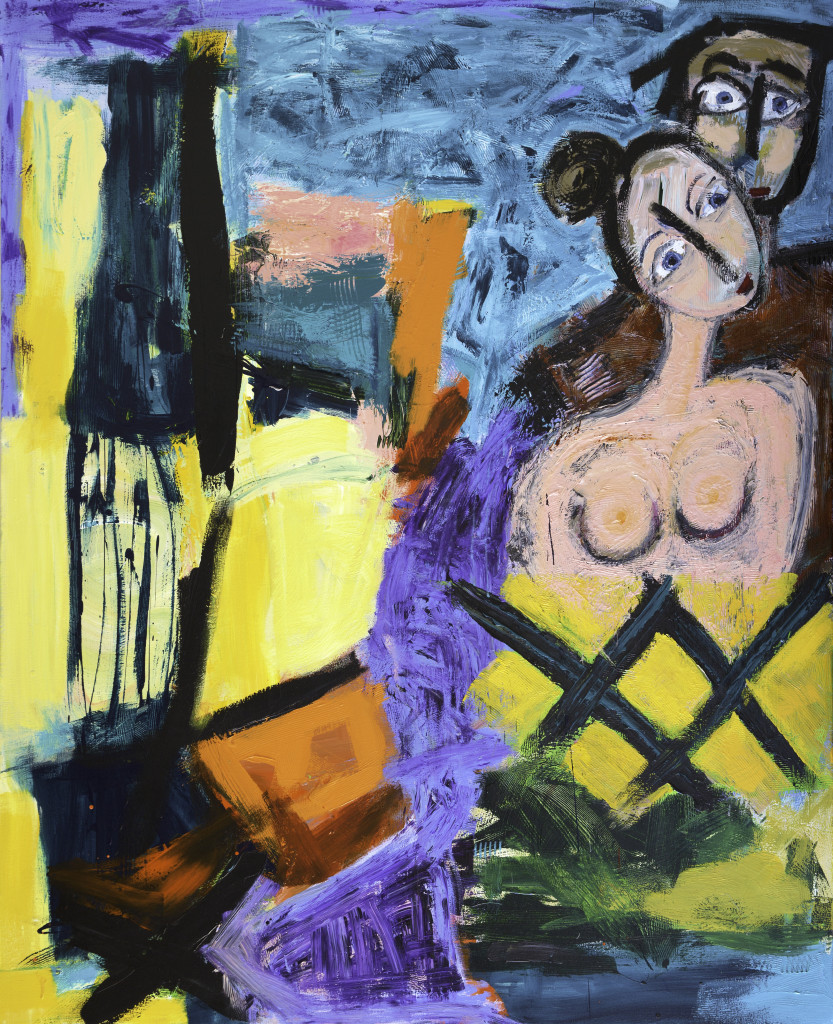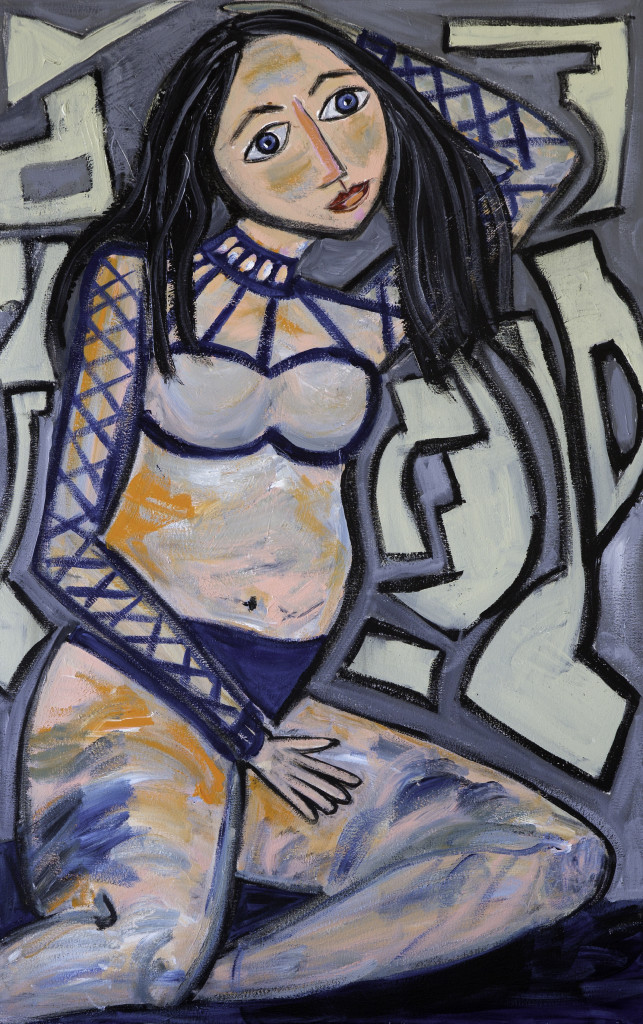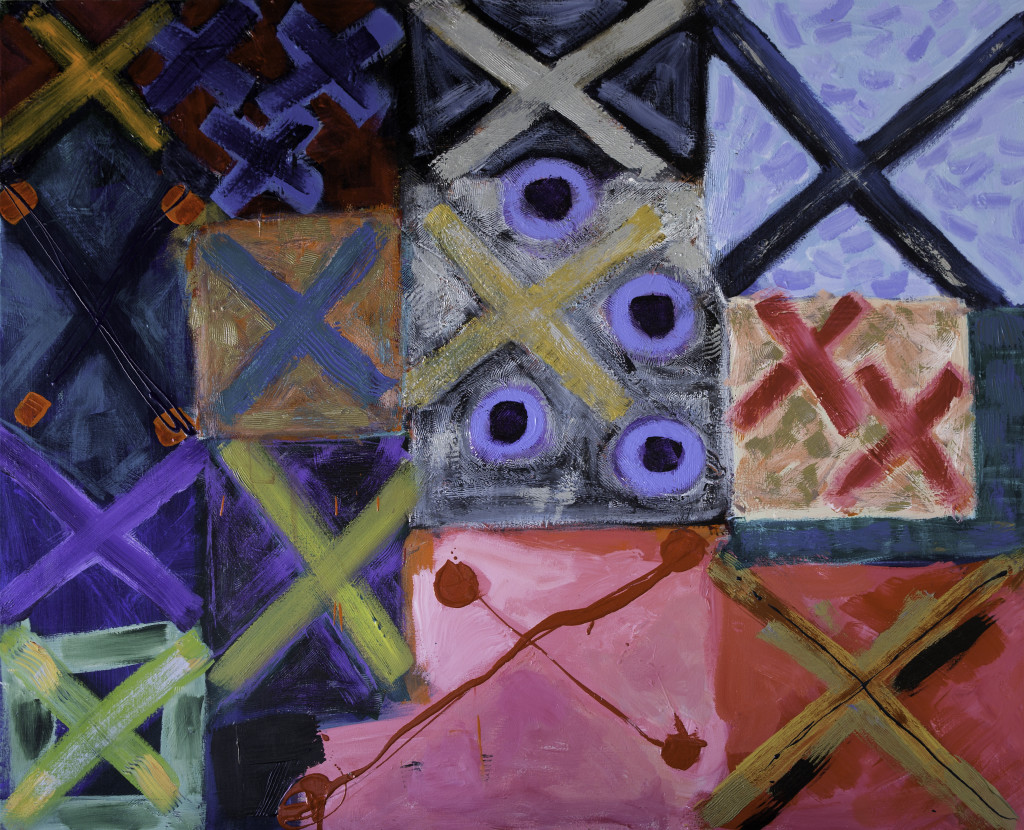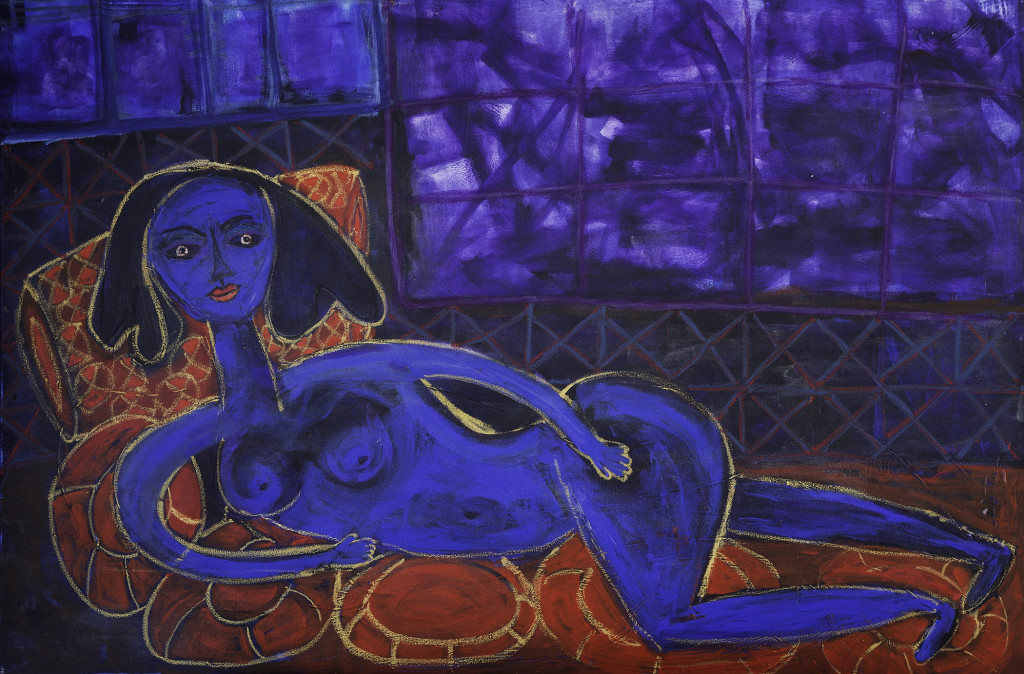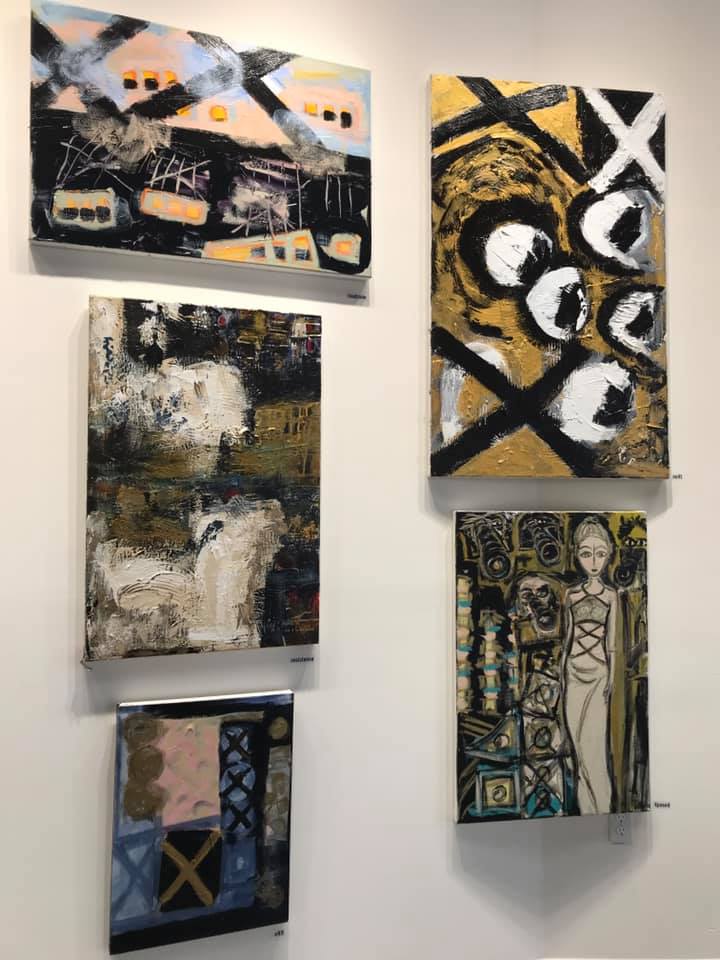At the Venice Institute for Contemporary Art gallery in San Pedro’s The Loft through October 31st, Painted Architecture brings an exciting exhibtion first shown earlier this year in Tallinn, Estonia to LA.
The work originated with Estonian and Latvian artists and friends Aleksejs Naumovs and Vilen Künnapu bringing together a vibrant collection combining Estonian art and Lavian architectural paintings. The result, curated by Meelis Tammemagi, features artists including Andris Vitolins, August Kunnapu, Martin (QBA) Kaares, Liisa Kruusamagi, and Meriliss (Meru) Rinne. In the U.S., co-curators include Juri Koll, Daisy Inslermann and Anna Matskevitš.
Along with their geography, the seven artists’ work also shares an intensity and fluidity, despite many different visions.
Multi-colored and vividly hued, “Welcome to Lemurial” from Vilen Künnapu exemplifies the spirit of the exhibition. Viewers see symbols and brilliant colors in a cheerful architectural landscape that includes vivid green trees, a bright red monument structure, and above the rich blue of what appears to be sky, what appears to be a sea of red, with a tiny boat afloat on a single wave line. The town appears to be old, smaller, perhaps a resort town or historic district. Another work features a more traditional take on a similar view, in which the blue is sea not sky and the red an island or mountain in the distance; here a yellow boat sails along the sea with foamy white caps. There is an innocence and sweetness to these works.
In a strong contrast, cool blues and greens and browns of Martin (QBA) Kaares’ “MOMA Yard” is all modern. This is an urban city, with high-rise buildings on the skyline, a distinct geometric structure, and a central image of seemingly winter-bare city park. Silhouetted dark blue figures rove the area, busy and on the move. Other work by the artist exhibit a similar cool hue, and a view of modern city life. Elliptical and quiet, these works offer a powerful look at urban life and a sense of removal from the personal.
Aleksejs Naumovs’ “Buranoll” returns the viewer to a more bucolic environment; a village-like town with meandering streets, in which small black and brown cats explore a courtyard. Once again, the buildings are brightly colored; the piece builds curiosity and impact by positioning its images slightly aslant, as if the perspective came from above. Other images of Naumovs give us different wider perspectives of the same courtyard; in one a shadowy human silhouette is joined by two of the cats.
In Meriliss (Meru) Rinne’s work, the perspective is more decidedly askew: thick, vivid abstract shapes create a layered jungle of forms that resemble both buildings and flowers, rockets and monuments. Diminutive in size, these works have a glowing depth that changes the meaning of the word “landscape” or “architecture.” In one work, an orange sun floats just over the top of buildings; in another, we see figures beneath a yellow orb in a dark sky. A dramatic energy suffuses each of the small but powerful images.
With “The Inner World of the Departing Man,” August Kunnapu gives us a darkening blue sky and purple, black, and grey factory buildings. The man, clad in green jacket and lavender shirt is walking towards us, again, the perspective is unique, angled, highly geometric. The landscape requires us to study it more than the man himself, as if it represented the man’s inner world, and perhaps it does.
Works by Andris Vitolins and Liisa Kruusmagi display equal power and grace. Kruusmagi wavers between impressionism and realism with encompassing city views that draw viewers into a unique world; her Dyptic, above, an evocative work that reveals a structure on the edge of a body of water. The division between the two separate panels creates a wonderful sense of nature vs. the work of man, and/or inclusive of it. Vitolins, like Kunnapu, relies on a more rigorous, structural approach, his paintings both an exciting blueprint for architecture and a realization.
The exhibition will host a closing reception on Sunday, October 27th from 2-5 p.m. The gallery is located on the top floor of The Loft, 401 Mesa Street in San Pedro.
- Genie Davis; photos provided by ViCA




